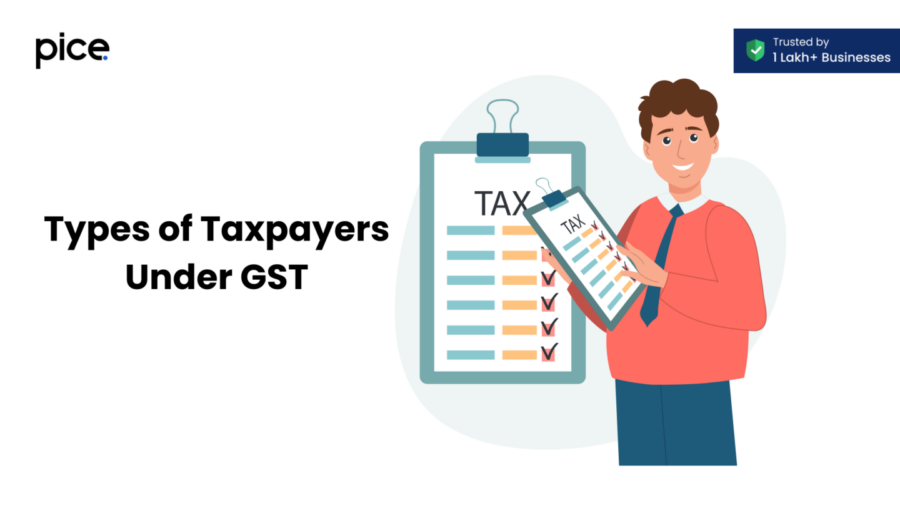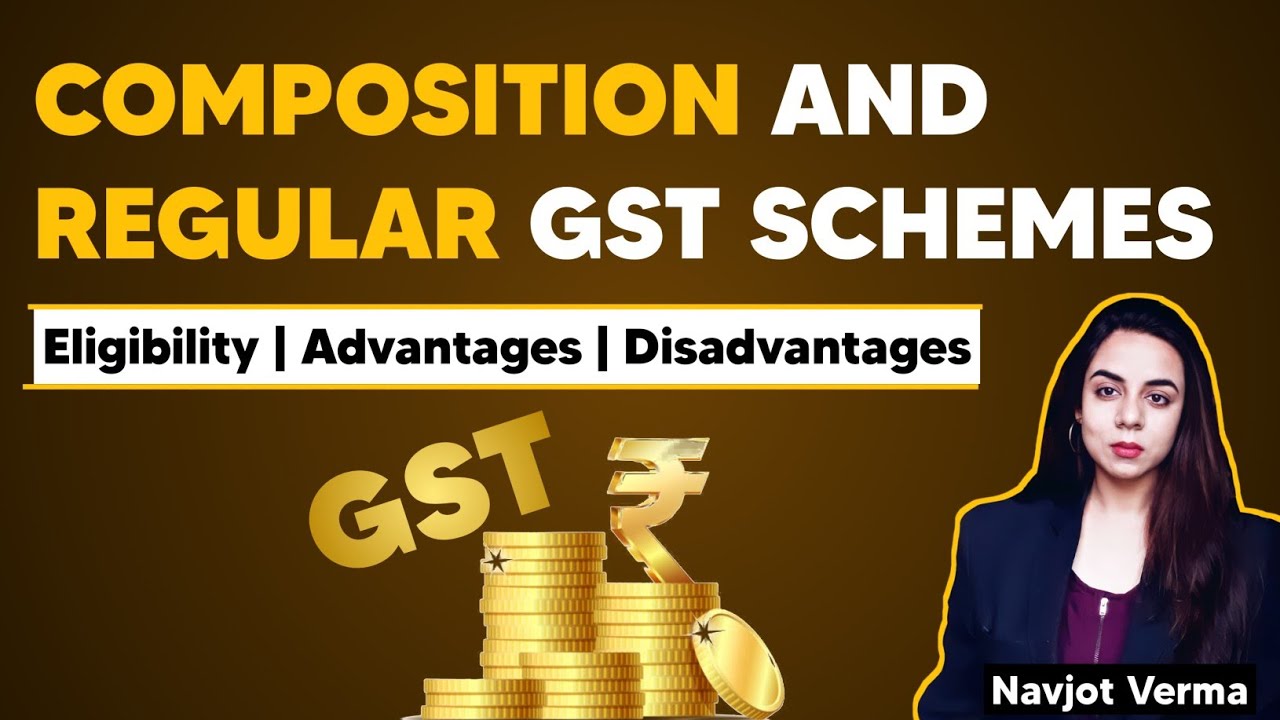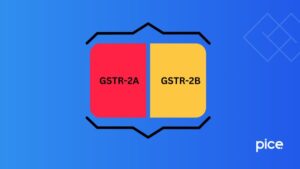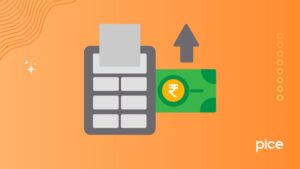Types of Taxpayers Under GST
- 29 Aug 24
- 10 mins

Types of Taxpayers Under GST
Key Takeaways
- Regular taxpayers under GST are businesses with an annual turnover above ₹40 lakh, filing monthly returns.
- Composite taxpayers benefit from a lower tax rate and simplified filing requirements, suitable for small businesses with specific turnover limits.
- Casual taxable persons and non-resident taxable persons register temporarily for a period of 90 days, extendable by another 90 days.
- E-commerce operators are required to file Form GSTR-8 monthly, detailing supplies and tax collected at source.
- Special Economic Zone (SEZ) developers and units must apply for separate GST registration to benefit from specific tax provisions.
A taxpayer under the Goods and Services Tax regime is anyone who conducts business in India and is registered or required to be registered under the Act, 2017. This includes individuals, companies, firms, LLPs, AOPs/BOIs, corporations, foreign entities, co-operative societies, local authorities, governments, trusts and other legal entities. The current GST regime categorizes taxpayers into different groups based on their turnover and filing requirements.
In this blog, we will walk you through the different types of taxpayers under GST, while highlighting all the associated details that you need to know.
What Are the Different Types of GST Taxpayers?
Understanding the different types of taxpayers under GST is crucial for filing your returns accurately. Here are the various categories of taxpayers under GST to help you determine which one applies to you.
Regular Taxpayers
Regular taxpayers are businesses or taxpayers having an annual turnover over ₹40 lakh. However, for special category states, the annual turnover of regular or normal taxpayers needs to be ₹20 lakh. Regular taxpayers need to file their returns based on the nature of their business every month.
Composite Taxpayers
Composite taxpayers are registered taxpayers under the composition scheme of the GST regime. These taxpayers enjoy the benefits of paying taxes at a nominal or lower tax rate compared to the standard tax rate.
The tax rate varies based on the annual turnover of the composition taxpayers and their quarterly receipts. One needs to file a CMP-08 form for the return for taxpayers.
The annual turnover of composition taxpayers needs to exceed ₹75 lakh for eastern states and Himachal Pradesh, ₹1.5 crore for other states and ₹50 lakh for service providers.
Exempted Taxpayers
Exempted taxpayers are business persons or entities having an annual turnover of less than ₹40 lakh for different Indian states. However, the required annual turnover for taxpayers in Northeastern and hilly states is ₹10 lakh.
If the annual turnover is below the threshold of the GST regime, the taxpayers do not have to collect taxes on goods and service supplies. Previously, the annual turnover limit has been ₹20 lakh. However, it was revised and extended to ₹40 lakh after the 32nd GST Council Meeting.
Input Service Distributors (ISD)
An input service distributor is the office of a supplier of taxable goods or services that receives tax invoices for the receipt of input services. Further, it issues tax invoices to distribute CGST, SGST and IGST credits with the same PAN number.
Thus, the input services are the only consideration for credit distribution and not the goods. Assesses not registered under the input service distributor category can enjoy the option to register themselves with the same PAN.
Casual Taxable Persons
A casual taxable person is a supplier of goods and services to a GST-applicable place but does not have a permanent place of business. For instance, if a taxable person or supplier or simply a casual taxpayer supplies goods or services to New Delhi but has a place of business in Rajasthan, he is a casual taxable person.
Non-Resident Taxable Persons
A non-resident taxable person is a supplier of goods and services to India occasionally with a place of business abroad. The difference between a casual taxable person and a non-resident taxable person is that the former has a place of business in India while the latter has a place of business outside the country.
For instance, if a non-resident Indian has a place of business in Germany, and he or she supplies goods or services to Delhi occasionally, he or she is a non-resident taxable person.
E-Commerce Operators
An e-commerce operator is a tax collector at source, registered under GST. The taxpayer needs to file Form GSTR-8 which includes the supply details made through e-commerce platforms and the TCS or tax collected at source. Further, an e-commerce operator has to file the GST return by the 10th of each month in order to be GST-compliant.
TDS Deductors
An entity or a person who deducts TDS before making a payment to the customer is a TDS deductor. The components of TDS include interest, salary, rent, commission, professional fees and others.
TCS Collectors
Sellers who collect TCS from buyers are the TCS collectors. Under the GST regime, e-commerce operators are TCS collectors who need to collect tax from buyers and pay it to the government. This ensures the collection of tax at the time of transaction, thereby aligning all taxable supplies.
UN Bodies/Embassies/Other Notified Persons

UN or United Nations bodies or embassies or other notified persons receive Unified Identity Numbers (UIN) from the Ministry of External Affairs. The UIN helps these entities in the procurement of taxable goods or services from a GST-registered person in India.
Further, the entities can claim GST refunds on each transaction using form RFD-10. You can generate this form after filing your GST returns with form GSTR-11.
SEZ Developers and SEZ Units
Under the tax regime, Special Economic Zone (SEZ) developers and units are separate business verticals. As a result, SEZ developers and units need to apply for separate and new registration under GST.
QRMP Taxpayer
QRMP stands for Quarterly Returns with Monthly Payments. A registered taxpayer who needs to file form GSTR-3B with an aggregate turnover of up to ₹5 crore in the previous financial year is eligible for this scheme. The taxpayer needs to pay the tax payable every month through a challan while filing GST returns quarterly if the aggregate turnover criteria qualify.
💡If you want to pay your GST with Credit Card, then download Pice Business Payment App. Pice is the one stop app for all paying all your business expenses.
In addition, one can file GSTR-1 once a quarter under this scheme and submit a monthly challan with form PMT-06. To avail the Invoice Furnishing facility or IFF in the case of B2B sales, one needs to upload invoices on the GST portal on a monthly basis.
Special Provisions of GST Registration for Casual Taxable Persons and Non-resident Taxable Persons
A casual taxable person or a non-resident taxable person can apply for GST registration at least five days before business commencement days. The Section 24 ensures special provisions of GST registration for casual and non-resident taxable persons under the GST Act 2017.
The special provision helps casual and non-resident taxable persons obtain a registration temporarily for a tax period of 90 days. This registration can be extended up to another 90 days for applicable individuals. In addition, a person obtaining registration under Section 24 has to deposit an advance of the GST liability or tax liability.
Difference Between Regular and Composite GST
Here are the key differences between regular and composite GST that you need to know:
| Regular GST | Composite GST |
| Regular GST payments are made at a standard rate including input tax credits. As a result, it is a type of service tax including inputs credits such as raw materials. | Composite GST payments or composition schemes are made at a fixed amount by small taxpayers to help them avoid challenging legal consequences. |
| The forms required to file regular GST are as follows: ● GSTR - 9 and GSTR 9C annually ● GSTR - 3B monthly returns ● GSTR - 1 on a monthly and quarterly basis | The forms required to file composite GST are as follows: ● GSTR - 4 annually ● Form CMP-08 quarterly |
| Regular GST payment includes both intrastate and inter-state supply of goods and services. | Composite scheme or GST includes intrastate supply of goods and services. It does not include inter-state supply of goods and services. |
| The GST threshold is ₹40 lakhs or ₹20 lakhs based on the Indian state and nature of business. | The GST threshold for suppliers of goods and restaurants is ₹1.5 crore while for service providers it is ₹50 lakhs. |
| There are no exceptions for regular taxpayers under the GST regime. | The exceptions under the composite scheme include interstate traders, suppliers of non-taxable goods, tobacco producers, pan masala and ice dealers. |
| The seller or the supplier has to issue a tax invoice under the regular GST scheme. | The supplier or the seller has to issue bills of supply under the composite GST scheme. |
Benefits of Regular Taxpayers Under GST
Regular taxpayers can reap multiple benefits under the GST regime, some of which are discussed below.
Availability of Input Tax Credit
The GST regime offers the benefit of input tax credit for regular taxpayers. Regular taxpayers or businesses can claim credits on raw materials, goods, and services against the GST collected on the sales. This benefit of input tax credit helps sellers reduce the tax burden significantly. Further, it reduces the tax liabilities of sellers followed by reducing operating costs and increasing efficiency.
Selling Via E-Commerce Portal

Regular taxpayers can sell goods and services on e-commerce platforms. E-commerce platforms further help ensure GST compliance by facilitating the collection of taxes and remittances. As a result, e-commerce platforms can help reap the benefits of the GST regime and taxation system. Tax collection is simpler with e-commerce platforms enabling the scope to scale up businesses and increase the customer base. Thus, selling via e-commerce platforms is a benefit for regular taxpayers under the GST regime.
Unlimited Territory of Business
The GST regime allows regular taxpayers to conduct their business activities irrespective of geographical boundaries. It allows entities and taxable persons to conduct business interstate or intrastate if GST is applicable. The access to unlimited territory helps regular taxpayers expand their market size and customer base by expanding the business across multiple states in the country and beyond national borders. As a result, it creates scope for economic growth and business expansion.
Afterword
The benefits that regular taxpayers can reap are significantly more advantageous compared to other types of taxpayers in GST. By being a regular taxpayer, you unlock the potential to prioritize business expansion across unlimited territories, thereby broadening your market size and customer base.




















